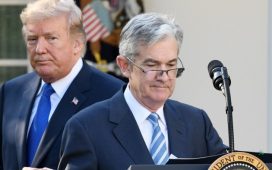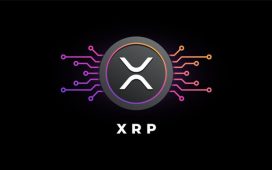Unlock the Editor’s Digest for free
Roula Khalaf, Editor of the FT, selects her favourite stories in this weekly newsletter.
The writer is a former chief investment strategist at Bridgewater Associates
The final, surprisingly dovish US monetary policy meeting of 2023 reinforced the consensus expectation of a soft landing for the country’s economy in the year ahead. That Goldilocks scenario, with inflation falling towards the Federal Reserve’s 2 per cent target without material damage to the labour market, would be a historical exception and there is a lot riding on it.
Take US equities: investors now discount that the Fed is able to cut rates by nearly 1.5 percentage point, starting as early as March, helping to drive double-digit earnings growth next year in S&P 500 companies.
Anytime everyone in the proverbial markets boat leans to one side, it’s time to look over the other railing for what could sink you. The list of potential catalysts for corrections in the coming year is daunting. It includes significant, sudden policy shifts around key elections; contagion from conflicts around the world; and unexpected setbacks related to technology.
Given the challenge of trying to understand and quantify such a broad swath of risks, one must prioritise. In the case of the US soft landing, there are at least four questions to start with. The answers will clearly influence the coming year’s market performance.
Consumption is question number one, given its dominant role driving US growth. In this case, a “just right” moderation in spending is needed. A rapid cooling in consumption that leads worried businesses to cut jobs would undermine incomes and create a self-reinforcing negative loop, weighing on earnings. Any Fed easing of monetary policy in response may not immediately go beyond what is already priced into markets.
Consumer demand that runs too hot could pose a risk as well. We could still see that, given the wealthy are enjoying excess savings and rising asset values. Strong consumption would help corporate revenues but could also keep service-sector wages elevated, slowing disinflation. In turn, that would probably lead the Fed to ease later and more gradually than is discounted. Higher-for-longer borrowing costs would restrain returns across a host of assets and keep debt-financing risks in focus both for the private sector and government.
The second question is how the US labour market normalises. Even if a Goldilocks moderation in consumer activity unfolds, a soft landing also requires wage disinflation without large job losses. One path is the supply of workers: after labour participation collapsed in early 2020, it has been gradually recovering.
Another path to so-called immaculate wage disinflation is a reduction in competition for available workers. Rather than letting workers go and risking staff shortages if the economy holds up, companies could choose to slow hiring and cut open positions. Such a trend is under way: job openings have declined from a 2022 peak of more than 12mn to 8.7mn in October.
Apart from jobs and consumption, another force that will affect the chances of a soft landing is commodities. Recent years have illustrated the outsized influence that commodity price changes can have on broader inflation. Research by the Dallas Federal Reserve estimated that 37 per cent of the variability in one-year inflation expectations and nearly 55 per cent of variability in headline Personal Consumption Expenditures inflation could be explained by petrol shocks during the pandemic period studied. But forecasting 2024 energy and food prices is inherently difficult, thanks in part to factors such as weather and geopolitics.
A final, often overlooked question lies outside the US, in China. Beijing’s economic challenges and policy responses have thus far helped the Fed. China has launched multiple rounds of monetary and fiscal stimulus. To date, those actions have increased supply more than demand, adding to Chinese deflation risks.
This has also contributed to deflation in US import prices on a year-on-year basis throughout 2023, following large price increases in 2021-22. Some 16.5 per cent of total US imports last year came from China. And US import prices from China fell 2.9 per cent year on year in November. US soft-landing enthusiasts may hope that Chinese demand doesn’t recover too much, too quickly.
Chicago Fed president Austan Goolsbee noted in November that driving inflation down as much as the US is doing now without a big recession, has “basically never happened” before. Answers to these four questions will help determine if today’s extreme market confidence in something rarely seen in history is well founded.








